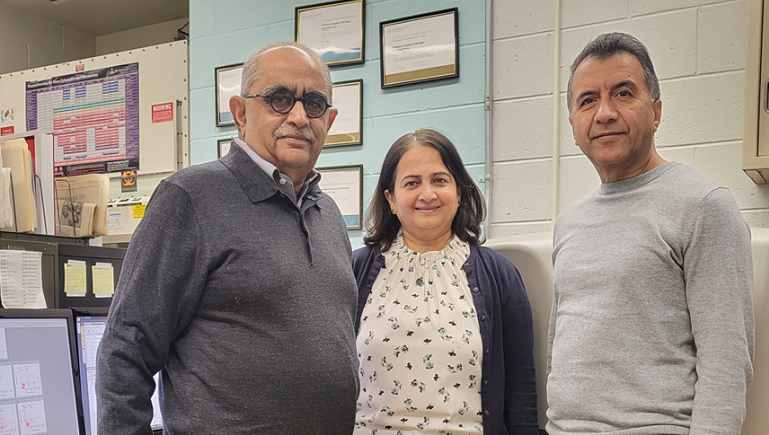
By studying two brothers with a rare disease first found in 1991 in a group of Navajo children in New Mexico, a team at the Wayne State University School of Medicine has discovered a landmark finding that could pave the way for much-needed treatment options.
Professor of Pediatrics and the Georgie Ginopolis Chair for Pediatric Cancer and Hematology Yaddanapudi Ravindranath, M.B.B.S., leads that the team that identified in patients with the disease Poikiloderma-Neutropenia, Clericuzio type, a novel and highly specific functional deficiency in monocytes, a type of white blood cells that are usually first responders to bacterial and viral invasion.
Poikiloderma-Neutropenia is a disorder in which the skin develops a mottled patchy appearance with pink and light-colored spots. The National Institutes of Health estimates that less than 1,000 people in the United States have the disease. Affected individuals have low total white blood cell counts and moderately low neutrophils, the white blood cells that are normally an immune system’s first line of defense.
The first response of monocytes is to produce inflammation. “Once the bugs are cleared or tissue damage is halted, the monocytes switch to a wound-healing or tissue-repair mode and complete the recovery from infection,” Dr. Ravindranath said.
“What we discovered was that in the two brothers with Poikiloderma, the monocytes were stuck in a pro-inflammatory mode and could not switch to the wound-healing mode,” he explained. “Gene expression analyses showed that this defect in monocyte functional switch may be caused by a defect in genes regulating intracellular signaling by a second messenger called cyclic adenosine monophosphate, or cAMP. This is the first time anyone had shown a specific cell function defect and a genetic process that is altered in persons with Poikiloderma. This discovery now gives a handle for the first time in understanding the biology of the disease, and design treatment for this poorly understood disease.”
The researchers published their findings, “Defective monocyte plasticity and altered cAMP pathway characterize USB1-mutated poikiloderma with neutropenia Clericuzio type,” in the British Journal of Haematology. Journal editors found the research especially groundbreaking, and published related commentary, “From clinical findings to the pathomechanism of poikiloderma with neutropenia.”
The disease was first described by Carol Clericuzio in a group of Navajo children from New Mexico, and later identified in children of European, Turkish, Moroccan and Asian Indian ancestry.
The brothers in the study were diagnosed at ages 4 and 1, and are now 16 and 13 years old.
An autosomal recessive inheritance, in which both parents are carriers, was suspected, as it affected boys and girls. In 2010, a group of investigators from Milan, Italy, showed that that the affected individuals carried two mutations in a gene now called USB1, and later confirmed by Clericuzio in children living in the U.S., including three from the Detroit area. USB1 regulates how the DNA code is translated and processed. It is suspected to disturb the function of many genes, Dr. Ravindranath said. Until now, how it causes the changes in the skin or results in low white blood cell counts and associated infections was not defined.
The finding is just the beginning. The team will now work to confirm the study results in other patients with different mutations in USB1 genes, more clearly define how the second messenger signaling is changed not only in monocytes but in other body cells and test potential drug interventions.
“Monocyte plasticity, or functional adaptation, may have other roles besides fighting infections, such as maintaining organ development and function, as well as cancer development,” Dr. Ravindranath said.
The team is now applying for research grants to support future experiments.
The initial work is supported by the Georgie Ginopolis Chair in Pediatric Cancer and Hematology Endowment funds from Wayne State University/the Children's Foundation of Michigan, and other anonymous private donations to WSU. The Microscopy, Imaging and Cytometry Resources Core is supported, in part, by National Institutes of Health grant P30 CA22453 to the Karmanos Cancer Institute, and R50 CA251068 to WSU.